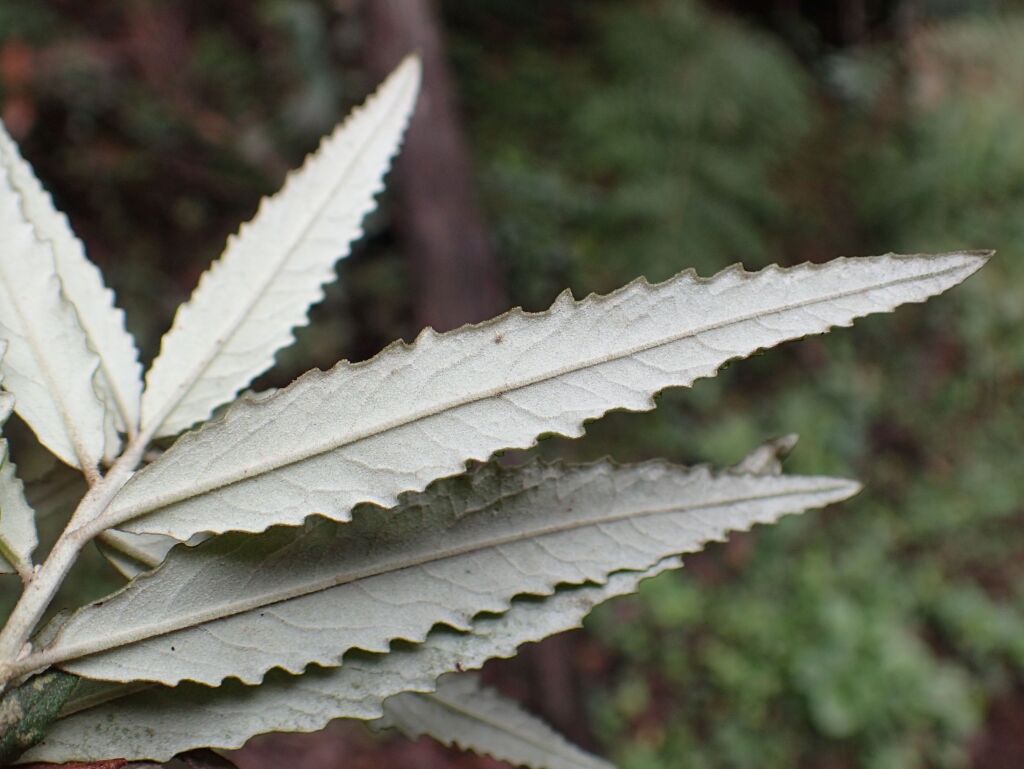Olearia phlogopappa
(Labill.) DC. Dusty Daisy-bushShrub to c. 2 m high; branchlets and leaf undersurfaces whitish-grey (sometimes yellowish in subalpine subspecies), with dense, minute, stellate hairs and often glandular. Leaves alternate, petiolate, narrow-ovate to narrow-obovate, 8–114 mm long, 3–30 mm wide; upper surface green or grey-green, dull, glabrous or retaining a scurf of fine stellate hairs or sometimes glandular, with a fine network of shallowly impressed veins; margin irregularly and shallowly serrate, dentate or crenate, or entire. Capitula 15–25 mm diam., pedunculate, in terminal or subtermial panicles or corymbs, or solitary and terminal; involucre campanulate to hemispherical, 3–7 mm long; bracts 4–5-seriate, graduating, pubescent, sometimes glandular. Ray florets 6–22, white, ligules 5–12 mm long; disc florets 6–25, yellow, often with 1-few stellate hairs at the tips of the lobes. Cypsela cylindric, 6-ribbed, 2–3 mm long, sericeous; pappus bristles 4–6 mm long.
Wim, VVP, VRiv, GipP, OtP, WaP, CVU, GGr, NIS, EGL, EGU, WPro, HSF, HNF, OtR, Strz, MonT, HFE, VAlp.
9 subspecies, 6 in Victoria.
Walsh, N.G.; Lander, N.S. (1999). Olearia. In: Walsh, N.G.; Entwisle, T.J., Flora of Victoria Vol. 4, Cornaceae to Asteraceae, pp. 886–912. Inkata Press, Melbourne.
 Spinning
Spinning

